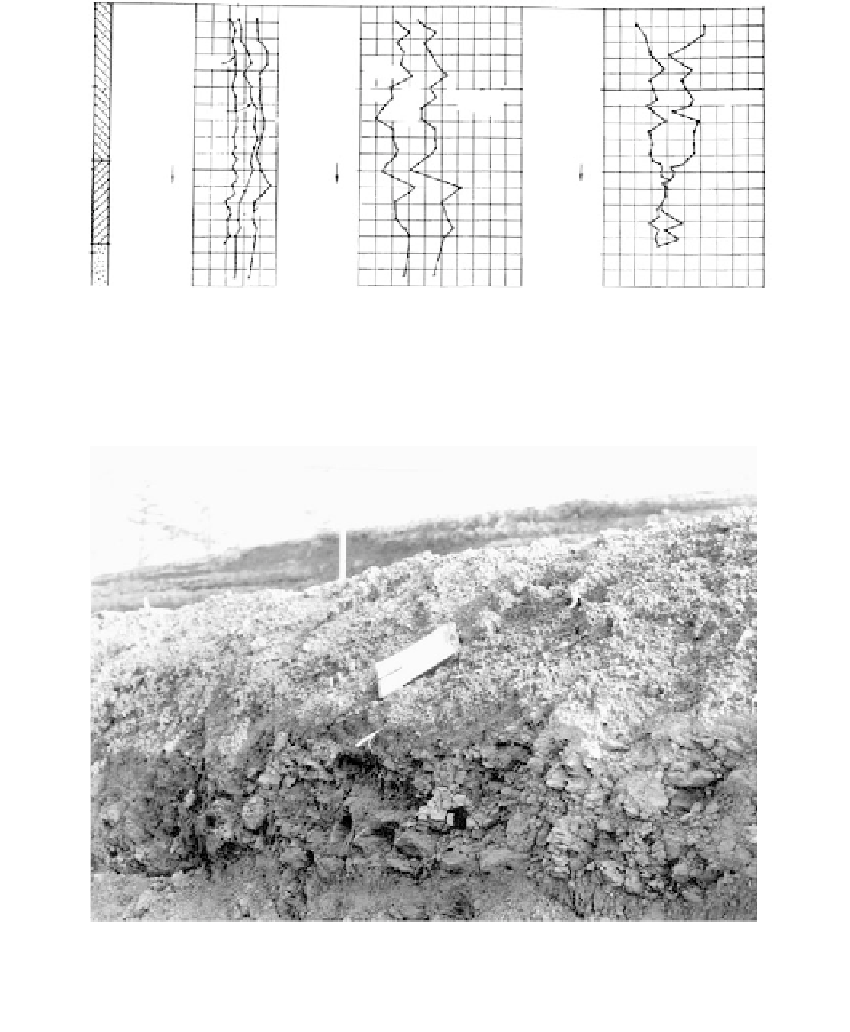Environmental Engineering Reference
In-Depth Information
Atterberg limits
and moisture content (%)
0 5 0
Grain size distribution (%)
Porosity (%)
m
0
50
100
0
50
100
0
Sandy
porous clay,
yellow,
red
and
brown
w
Clay
fraction
5
5
5
5
Silt
fraction
D
<
5
Sand fraction
Water
Solid matter
Air
D
>
50
LP
D
=
5
−
50
µ
10
10
10
10
Stiff
sandy clay,
yellow and
red
14.5 m
Compact
coarse sand
LL
15
15
15
15
FIGURE 7.7
Characteristics of residual clay from decomposition of clayey sandstone (Campinas, Brazil). (From Vargas, M.,
Proceedings of the 3rd International Conference on Soil Mechanics and Foundation Engineering
, Zurich, Vol. I, 1953,
p. 67. With permission.)
FIGURE 7.8
Residual soils from Traissiac shales (Leesburg, Virginia).
In some cases, the shales decompose to leave a residue of highly expansive clay without
shale fragments. In Texas, the parent formation is characteristically a hard gray shale or
claystone of Cretaceous age or younger, containing montmorillonite and some calcium
and iron pyrite. Decomposition transforms the shale into a tan jointed clay which can
extend to depths of 30 to 60 ft (Meyer and Lytton, 1966). The deposits frequently contain
bentonite layers or limy layers due to changes in the marine environment during deposi-
tion. The expansive “hard dark gray clay” shown on the boring log (
Figure 7.9c)
is
believed to be a decomposed Del Rio shale. The distribution of shales and expansive clays
in Texas is given in
Figure 7.54
and discussed in
Section 7.4.4.


